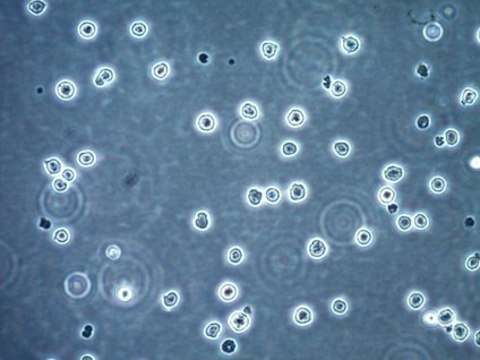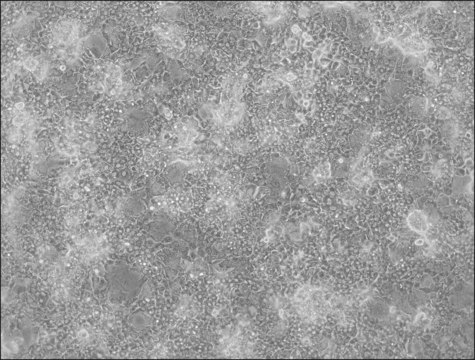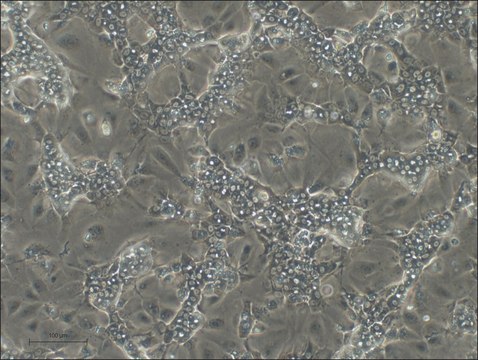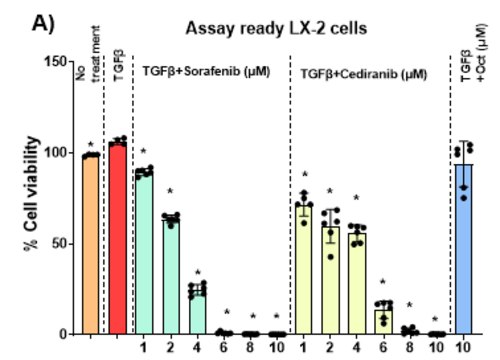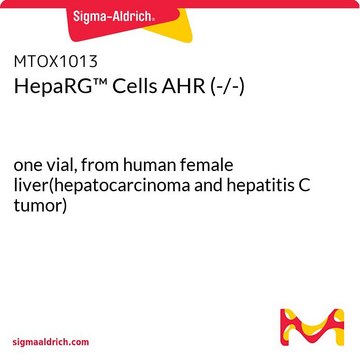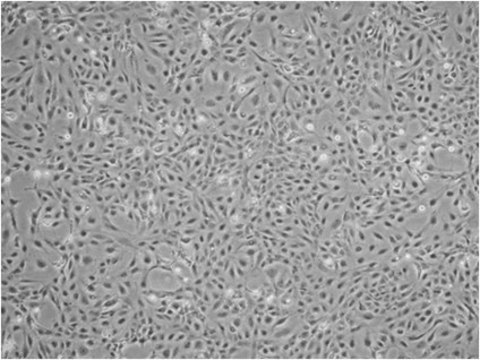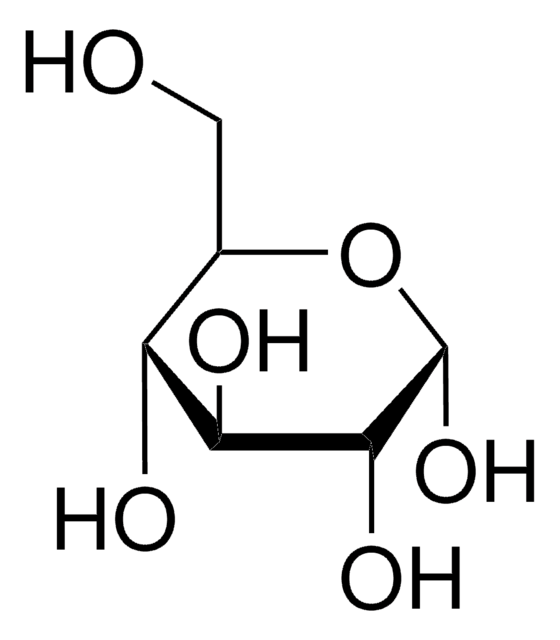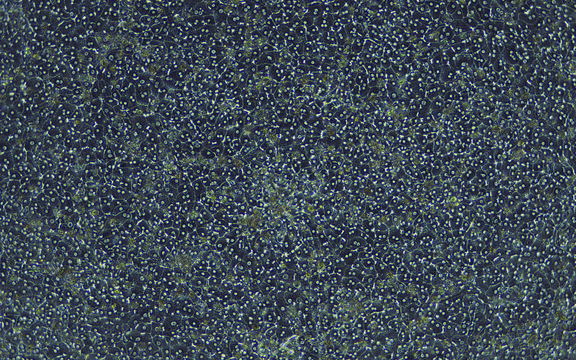SCC119
ImKC Immortalized Mouse Kupffer Cell Line
The ImKC Murine Immortalized Kupffer Cell Line can be used to develop in vitro model cell systems to advance the study of liver injury, function, and disease.
Synonym(s):
ImKC Cell Line
Sign Into View Organizational & Contract Pricing
All Photos(1)
About This Item
UNSPSC Code:
41106514
eCl@ss:
32011203
NACRES:
NA.81
Recommended Products
biological source
mouse
technique(s)
cell based assay: suitable
cell culture | mammalian: suitable
shipped in
ambient
General description
ImKC is a cytokine-producing immortalized Kupffer cell line that was established from transgenic mice expressing the thermolabile mutant tsA58 of the Simian virus 40 large T antigen under the control of the H-2kb promoter. Primary KC were obtained using a three step procedure: liver perfusion, centrifugal elutriation, and sorting for F4/80+ cells. ImKC were identified within the small-intermediate population of KC that maintained stable expression of F4/80, and the surface antigens CD11b, CD14 and TLR4.
Kupffer cells (KC), also known as stellate macrophages, are liver macrophages that reside in the lumen of the liver sinusoids. Kupffer cells play a critical role in maintaining liver functions including the removal of pathogens & foreign materials, antigen presentation and modulating innate immune responses. In vitro studies of Kupffer cells have been hindered by the difficulty in isolating sufficient number of primary cells and the limited lifespan of the cells in culture.
Cell Line Description
Macrophage Cells
Application
Research Category
Inflammation & Immunology
Metabolism
Inflammation & Immunology
Metabolism
Research Sub Category
Liver Physiology
Liver Physiology
This product is intended for sale and sold solely for internal non-commercial research use per the terms of the “Restricted Use Agreement” as detailed in the product documentation. For information regarding any other uses, please contact licensing@emdmillipore.com.
Quality
• Each vial contains ≥ 1X106 viable cells.
• Cells tested negative for infectious diseases by a Mouse/Rat Comprehensive CLEAR panel PCR panel by Charles River Animal Diagnostic Services.
• Cells tested negative for mycoplasma contamination
• Cells tested negative for infectious diseases by a Mouse/Rat Comprehensive CLEAR panel PCR panel by Charles River Animal Diagnostic Services.
• Cells tested negative for mycoplasma contamination
Storage and Stability
Store in liquid nitrogen. The cells can be cultured for at least 10 passages after initial thawing without significantly affecting the cell marker expression and functionality.
Storage Class Code
12 - Non Combustible Liquids
WGK
WGK 1
Flash Point(F)
Not applicable
Flash Point(C)
Not applicable
Regulatory Information
新产品
Certificates of Analysis (COA)
Search for Certificates of Analysis (COA) by entering the products Lot/Batch Number. Lot and Batch Numbers can be found on a product’s label following the words ‘Lot’ or ‘Batch’.
Already Own This Product?
Find documentation for the products that you have recently purchased in the Document Library.
Eui Jin Kim et al.
Pharmaceutics, 13(3) (2021-04-04)
Inflammation is a defense mechanism that protects the body from infections. However, chronic inflammation causes damage to body tissues. Thus, controlling inflammation and investigating anti-inflammatory mechanisms are keys to preventing and treating inflammatory diseases, such as sepsis and rheumatoid arthritis.
Julia Rudolph et al.
Scientific reports, 11(1), 15702-15702 (2021-08-05)
Microplastic (MP) contamination has been identified as an ecological problem with an increasing impact on everyday life. Yet, possible effects of MP at the cellular level are still poorly understood. Here, the interaction of murine macrophages (J774A.1, ImKC) and epithelial
Hepatocyte SREBP signaling mediates clock communication within the liver.
Guan, et al.
The Journal of Clinical Investigation, 133 (2023)
Nicholas J Lennemann et al.
Journal of virology, 95(18), e0107321-e0107321 (2021-07-08)
Sudan virus (SUDV) is one of five filoviruses that compose the genus Ebolavirus that has been responsible for episodic outbreaks in Central Africa. While the SUDV glycoprotein (GP) structure has been solved, GP residues that affect SUDV entry have not
Hsin-Tzu Liu et al.
Antioxidants (Basel, Switzerland), 11(5) (2022-05-29)
Inflammation plays an important role in the pathophysiology of depression. This study aims to elucidate the antidepressant effect of baicalein, an anti-inflammatory component of a traditional Chinese herbal medicine (Scutellaria baicalensis), on lipopolysaccharide (LPS)-induced depression-like behavior in mice, and to
Our team of scientists has experience in all areas of research including Life Science, Material Science, Chemical Synthesis, Chromatography, Analytical and many others.
Contact Technical Service